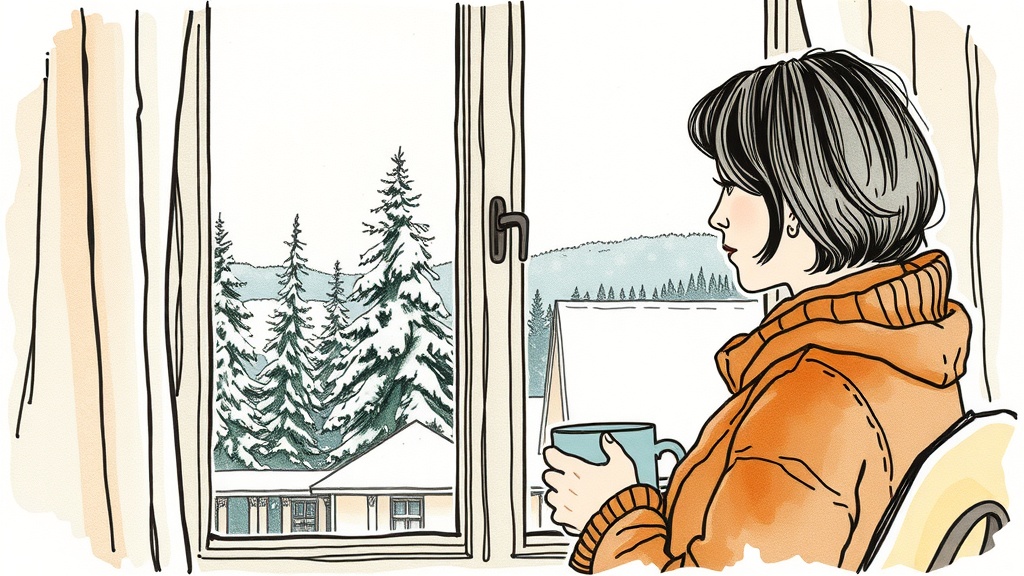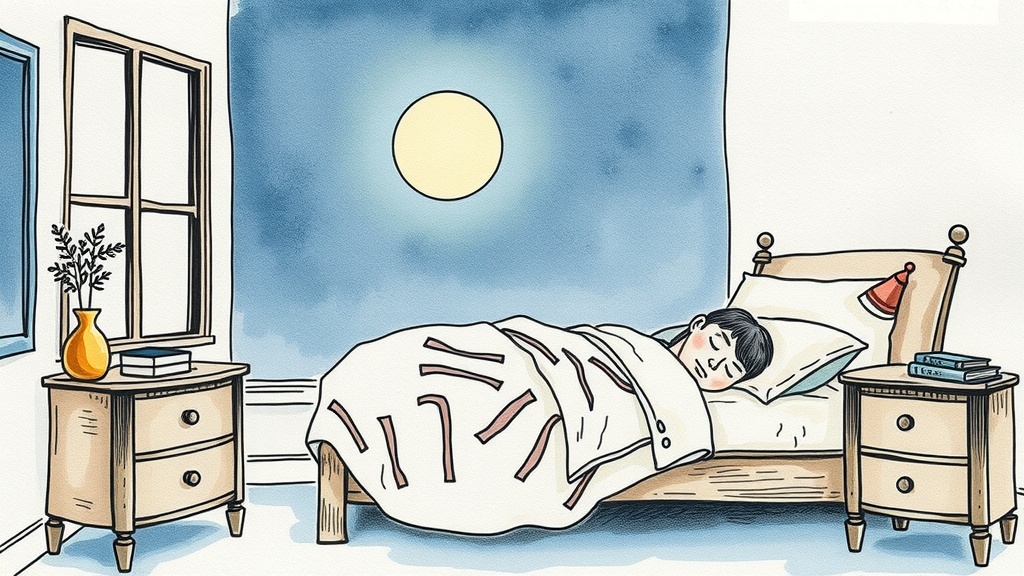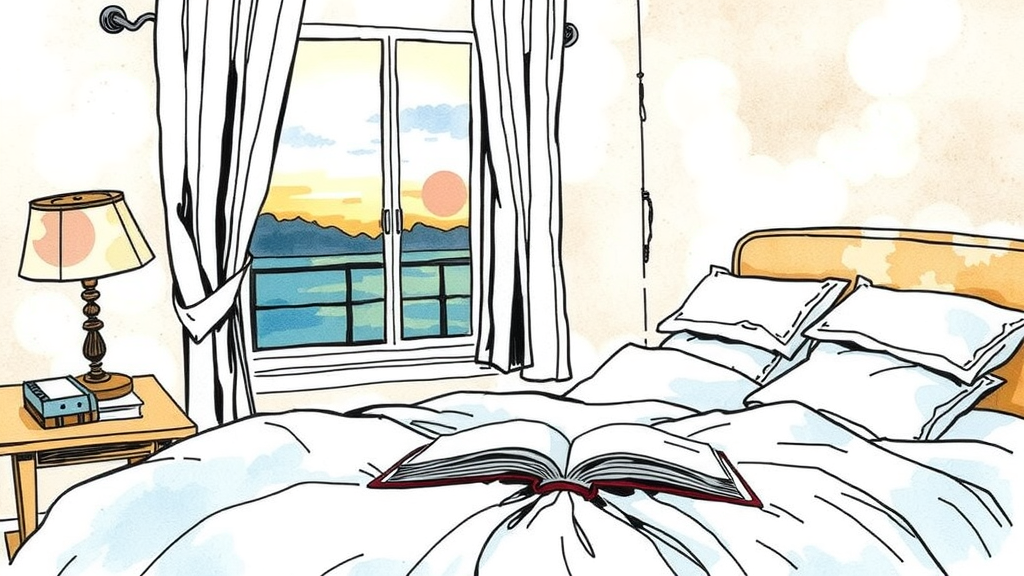· Don Schmidt · Guides · 9 min read
Can Chinooks Really Ruin Your Sleep? How to Cope with Weather-Related Insomnia in Calgary and Southern Alberta
Discover how Calgary's Chinooks impact sleep and learn effective strategies to combat weather-related insomnia in Southern Alberta.
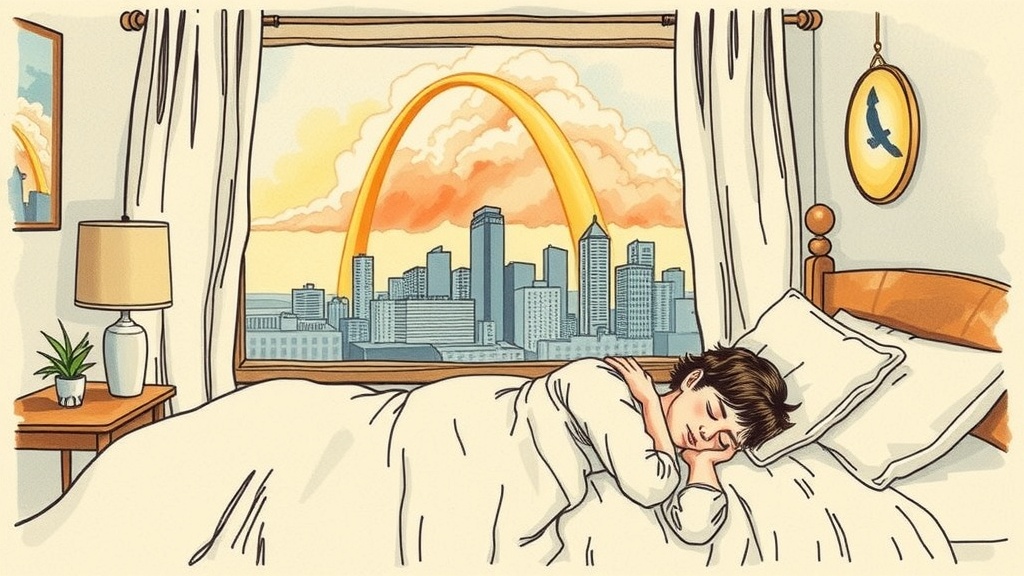
Understanding the Chinook’s Impact on Sleep
For residents of Calgary and Southern Alberta, the Chinook wind is a familiar meteorological phenomenon. Known for its dramatic temperature swings, bringing warm, dry air from the mountains to the prairies, it’s often a welcome respite from frigid winter temperatures. Yet, alongside the relief, many people report a less pleasant side effect: sleep disturbances. The question, “Can Chinooks really ruin your sleep?” is a common one, and for many, the answer is a resounding yes. This article delves into the science behind weather-related insomnia, specifically focusing on the Chinook’s impact on sleep, and provides practical strategies to help you cope with these unique challenges.
The Chinook Phenomenon: More Than Just a Warm Wind
A Chinook is a Foehn wind, a type of dry, warm, down-slope wind that occurs in the lee of a mountain range. As air ascends the western slopes of the Rockies, it cools and precipitates its moisture, often as snow. Upon descending the eastern slopes, this dry air compresses and heats up significantly, leading to rapid temperature increases, sometimes by 10-20 degrees Celsius in a matter of hours. This process also involves significant fluctuations in barometric pressure.
It’s these rapid and often dramatic shifts in atmospheric pressure, combined with changes in temperature and humidity, that are believed to play a role in physiological responses for some individuals. While not everyone is sensitive to these changes, a significant portion of the population reports symptoms ranging from headaches and migraines to joint pain, irritability, and, most notably, disrupted sleep.
The Science Behind Weather-Related Insomnia
The connection between weather and our bodies, often referred to as meteoropathy or weather sensitivity, is complex and not fully understood. However, several theories attempt to explain why Chinooks might lead to weather-related insomnia:
- Barometric Pressure Changes: The most widely cited culprit is the rapid drop in barometric pressure that often precedes and accompanies a Chinook. Our bodies are accustomed to a certain external pressure, and significant changes can affect internal pressure systems. This might lead to changes in blood pressure, fluid retention, or even the pressure within our sinuses and joints, causing discomfort or pain that interferes with sleep.
- Serotonin Levels: Some research suggests that fluctuations in atmospheric pressure and light exposure (which can also be affected by Chinook clouds) might influence neurotransmitter levels, particularly serotonin. Serotonin is a precursor to melatonin, the hormone that regulates sleep-wake cycles. Disruptions in serotonin production could therefore impact melatonin synthesis, leading to difficulty falling asleep or staying asleep.
- Ion Imbalance: Chinooks are often associated with an increase in positive ions in the atmosphere. While controversial, some theories propose that an excess of positive ions can affect mood, energy levels, and sleep quality by impacting the body’s electrical balance.
- Temperature and Humidity Swings: While Chinooks bring warmth, the accompanying dry air can also affect mucous membranes, leading to nasal dryness or irritation that makes breathing difficult at night. The sudden temperature shift itself can also disrupt the body’s thermoregulation, making it harder to maintain the optimal sleep temperature.
Symptoms of Chinook-Induced Sleep Disturbances
If you live in Calgary or Southern Alberta and find yourself struggling with sleep during Chinook events, you’re not alone. Common symptoms include:
- Difficulty falling asleep: Your mind might race, or you might feel an inexplicable restlessness.
- Frequent waking: You might wake up multiple times throughout the night, struggling to get back to sleep.
- Unrefreshing sleep: Even if you do sleep, you wake up feeling tired, groggy, or unrested.
- Increased headaches/migraines: Many report these alongside their sleep disturbances during a Chinook.
- Generalized aches and pains: Joint pain or muscle soreness can make finding a comfortable sleeping position challenging.
- Irritability and mood swings: The lack of quality sleep, combined with the atmospheric changes, can impact your emotional state.
Coping Strategies for Weather-Related Insomnia
While you can’t control the weather, you can implement strategies to mitigate its effects on your sleep. These tips combine general sleep hygiene with specific considerations for Chinook conditions.
1. Optimize Your Sleep Environment
- Maintain a Consistent Temperature: Aim for a cool bedroom, typically between 18-20°C (65-68°F). If a Chinook brings unexpected warmth, use fans or air conditioning to keep your room cool.
- Block Out Light: Ensure your bedroom is as dark as possible. Use blackout curtains or an eye mask, especially if the Chinook brings brighter, sunnier days that disrupt your internal clock.
- Control Noise: The winds associated with Chinooks can be strong and noisy. Consider using earplugs, a white noise machine, or a fan to mask external sounds.
- Humidity Control: The dry air from Chinooks can dry out nasal passages. A humidifier can add moisture to the air, potentially easing breathing and reducing irritation.
2. Prioritize Sleep Hygiene
Consistent sleep habits are your best defense against any form of insomnia, including weather-related insomnia.
- Stick to a Schedule: Go to bed and wake up at the same time every day, even on weekends. This helps regulate your body’s natural sleep-wake cycle.
- Create a Relaxing Bedtime Routine: An hour before bed, wind down with calming activities like reading, a warm bath, gentle stretching, or listening to soothing music. Avoid screens (phones, tablets, computers) as the blue light can interfere with melatonin production.
- Mind Your Diet and Drinks: Avoid caffeine and heavy meals late in the day. While alcohol might initially make you feel drowsy, it can disrupt sleep later in the night. Nicotine is also a stimulant and should be avoided close to bedtime.
- Regular Exercise: Engage in moderate exercise most days of the week, but try to finish your workouts at least a few hours before bedtime.
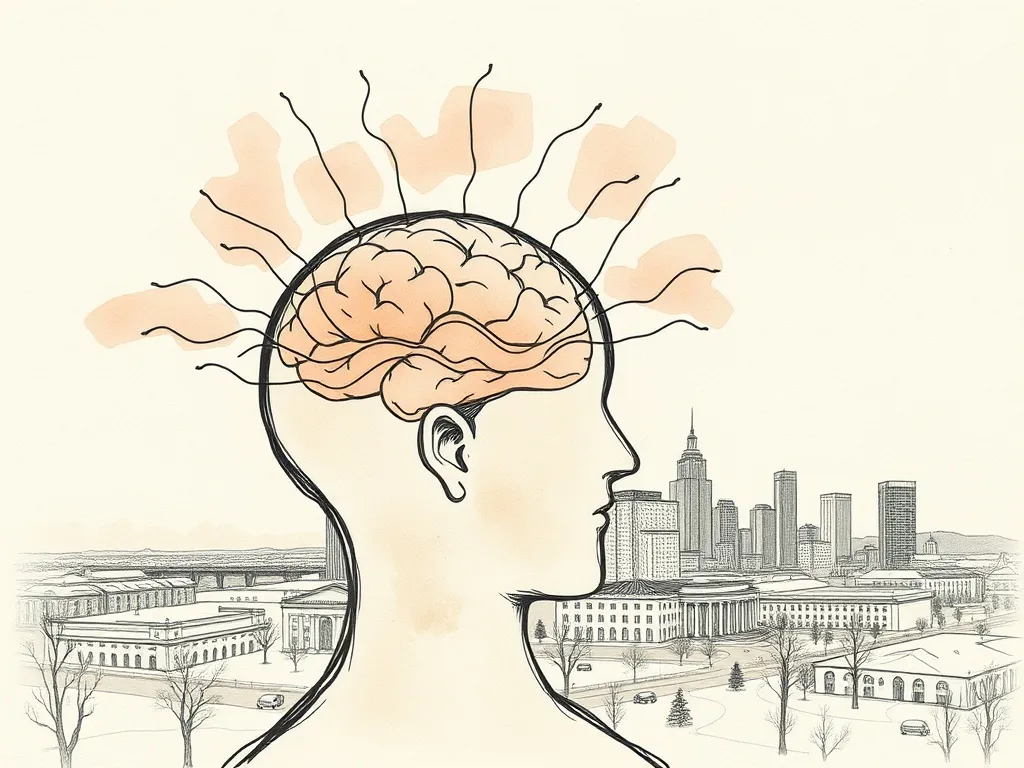
3. Manage Stress and Discomfort
The physical discomfort and mental agitation sometimes associated with Chinooks can exacerbate sleep problems.
- Hydrate Well: Dehydration can contribute to headaches and general malaise. Drink plenty of water throughout the day.
- Pain Management: If you experience headaches or joint pain, over-the-counter pain relievers, as recommended by a healthcare professional, might help manage symptoms that keep you awake.
- Mindfulness and Relaxation Techniques: Practices like deep breathing, meditation, or progressive muscle relaxation can help calm your mind and body before sleep. Consider techniques for managing anxiety related to sleep, which can be particularly useful when dealing with unpredictable sleep disturbances.
- Limit Nap Duration: If you must nap, keep it short (20-30 minutes) and early in the afternoon to avoid interfering with nighttime sleep.
4. Consider Professional Support
If weather-related insomnia significantly impacts your quality of life, it’s worth exploring professional help. While weather is a trigger, underlying sleep issues can be amplified.
- Consult Your Doctor: They can rule out any other medical conditions contributing to your insomnia and discuss medication options if appropriate. However, it’s important to understand the landscape of sleep solutions.
- Cognitive Behavioral Therapy for Insomnia (CBT-I): This is considered the gold standard treatment for chronic insomnia and can be highly effective, even for unique triggers like weather patterns. CBT-I helps you identify and change thoughts and behaviors that interfere with sleep. It offers a structured approach to improving sleep hygiene, challenging unhelpful beliefs about sleep, and developing coping mechanisms. For those in Alberta weighing options, understanding the differences between CBT-I vs. sleeping pills can be crucial in making an informed choice for long-term sleep health. Many different demographics can benefit from tailored CBT-I approaches, for instance, there are specific CBT-I strategies for shift workers which address their unique circadian challenges, or specialized guidance for women navigating menopausal changes and their impact on sleep, as detailed in CBT-I sleep therapy for women in menopause.
Beyond Chinooks: Other Weather Factors Affecting Sleep
While Chinooks are a prominent concern in Calgary and Southern Alberta, other weather phenomena can also disrupt sleep:
- Extreme Heat: Prolonged heatwaves, common in Alberta summers, make it difficult for the body to cool down to a sleep-conducive temperature.
- Severe Storms: Thunderstorms can be noisy and anxiety-inducing, leading to broken sleep.
- Extreme Cold: While usually counteracted by indoor heating, excessively cold outdoor temperatures can make it tempting to overheat your sleeping environment, which can also hinder good sleep.
Living Well in Southern Alberta
Living in a region with such dynamic weather patterns means adapting. While the Chinook’s impact on sleep can be frustrating, recognizing its influence is the first step towards managing it. By implementing robust sleep hygiene practices, understanding how your body reacts to atmospheric changes, and not hesitating to seek professional help when needed, you can significantly improve your sleep quality, even when the winds are howling and the pressure is dropping.
Remember, your body’s response to weather is individual. Pay attention to how you feel and adjust your routine accordingly. With patience and persistence, you can enjoy the unique beauty of Southern Alberta’s climate without consistently sacrificing your precious sleep.
Frequently Asked Questions (FAQ)
Q: What exactly is a Chinook, and how does it relate to sleep problems? A: A Chinook is a warm, dry wind that descends the eastern slopes of the Rocky Mountains, causing rapid temperature and barometric pressure changes. These pressure changes, along with shifts in humidity and temperature, are thought to affect physiological processes, leading to symptoms like headaches, irritability, and sleep disturbances in sensitive individuals.
Q: Are sleep problems during Chinooks purely psychological, or is there a scientific basis? A: While individual perception and anxiety can play a role, there is a scientific basis for weather sensitivity. Theories involve barometric pressure affecting serotonin levels, fluid balance, and even pain perception, all of which can directly impact sleep quality. It’s not “all in your head.”
Q: How quickly do people typically feel the effects of a Chinook on their sleep? A: The effects can be felt quite rapidly, often within hours of the Chinook developing or even preceding it as the pressure system shifts. Some people report feeling changes as the pressure drops before the warm air even arrives.
Q: Can children or pets also be affected by Chinooks and sleep? A: Yes, children and pets can also exhibit signs of being affected by Chinooks. Children might become more irritable, restless, or have difficulty settling down for sleep. Pets may show changes in behavior, such as increased lethargy, restlessness, or increased sensitivity to pain, which can also disrupt their sleep patterns.
Q: What’s the most effective long-term strategy for dealing with Chinook-related insomnia? A: The most effective long-term strategy involves a combination of consistent sleep hygiene practices, creating an optimal sleep environment, and managing stress. For persistent issues, Cognitive Behavioral Therapy for Insomnia (CBT-I) is highly recommended as it addresses the underlying behaviors and thoughts that perpetuate insomnia, offering sustainable relief regardless of weather triggers.
Assess Your Sleep Quality Today
Take our My Sleep Health Score assessment to get personalized insights about your sleep patterns and discover how CBT-I can help you achieve better sleep.

Don Schmidt
15+ years of experience in sleep therapy and Cognitive Behavioral Therapy for Insomnia (CBT-I). Passionate about connecting individuals struggling with sleep disorders to evidence-based, non-medical treatment solutions. Author of hundreds of articles and comprehensive guides on sleep health, CBT-I techniques, and overcoming insomnia. When not helping clients achieve better sleep, you can find me hiking with my family and dogs or enjoying a good book.
Ready to connect with a provider?
Allow us to connect you with a provider who can help.

